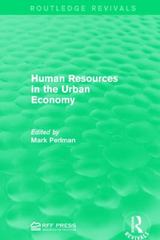Question
1) Your firm must decide whether or not to introduce a new product.If you introduce the new product, your rival will have to decide whether
1)
Your firm must decide whether or not to introduce a new product.If you introduce the
new product, your rival will have to decide whether or not to clone it.If you don't
introduce the new product, you and your rival will earn $1million each.If you introduce
the new product and your rival clones it, you will lose $5million and your rival will gain
$20 million (you have spent a lot on R&D and your rival will not have to spend any R&D
in order to clone it).If you introduce the new product and your rival does not clone, you
will make $100million and your rival will make $0.
a)
Draw the extensive form (the tree diagram) of this game, carefully labeling each node
and outcomes associated with each action.
b)
Should you introduce the new product?
c)
How would your answer change if your rival has "promised" not to clone your product?
d)
What would you do if patent law prevented your rival from cloning your product?
2)
Give an example of a government-created monopoly.
Is creating this monopoly necessarily bad public policy?
Define natural monopoly. What does the size of a market have to do with whether an
industry is a natural monopoly?
Why is a monopolist's marginal revenue less than the price of its good?
Can marginal revenue ever be negative? Explain.
3)
1: If you invest $2,000 with a 4% interest rate compounded annually, how much will you have in ten years?
$2,928.20
$2,800.00
$2,960.49
$2,670.00
2: If you are going to receive $2,000 in six years from now, how much is that worth today, assuming 5% annual simple interest?
$1,780.32
$1,538.46
$1,904.76
$2,600.00
3: Which of the following options will generate the highest interest over the term, assuming the same $100 principal?
5% quarterly compounding for 3 years
5% monthly compounding for 2 years
5% simple interest rate for 3 years
5% daily compounding for 2 years
4: What's the effective rate for investment with a 6% annual rate, compounded quarterly?
6%
1.5%
6.45%
6.14%
5: Which of the following statements indicates a nominal rate of 5% annually?
5% per month, compounded daily
5% per quarter
5% per year, compounded monthly
Effective 5% per year, compounded semi-annually
6: If you need $5,000 in 4 years' time and your investment generate 6% interest per year, compounded semi-annually, how much do you need to put away today?
$4,716.98
$3,137.06
$3,960.47
$3,947.05
Step by Step Solution
There are 3 Steps involved in it
Step: 1

Get Instant Access to Expert-Tailored Solutions
See step-by-step solutions with expert insights and AI powered tools for academic success
Step: 2

Step: 3

Ace Your Homework with AI
Get the answers you need in no time with our AI-driven, step-by-step assistance
Get Started


